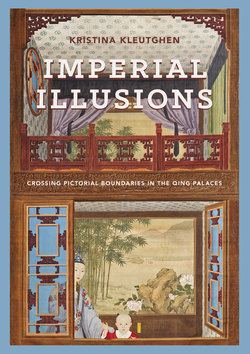Читать книгу Imperial Illusions - Kristina Kleutghen - Страница 72
На сайте Литреса книга снята с продажи.
Оглавлениеonly available to bannermen, before progressing to deputy prefect (tongzhi) of Jingdong prefecture in the southwestern province of Yunnan. In 1706 he returned to north China as prefect (zhifu) of Guangping County in Zhili, and in 1711 he became circuit intendant (daotai) of Daming County in the Metropolitan Circuit of Zhili, both positions in southern Hebei approximately 280 miles from Beijing. In 1713 he moved to south China as surveillance commissioner (anchashi) of Guangdong; in 1716 he became provincial administration commissioner (buzhengshi) for Anhui; and in 1722 he rose to acting provincial governor (shuli xunfu) of Guangdong.
These increasingly important positions demonstrate Nian’s progressively rising political star and increasing responsibility, which gave him the experience necessary to assume even more influential posts upon Yongzheng’s ascension to the throne in 1723. This was a watershed event in Nian’s career, the family connection resulting in his promotion to full provincial governor (xunfu) of Guangdong, a very powerful and influential position given the significance of the port of Guangzhou.11 Moving to Beijing in 1725, Nian spent a year in the Ministry of Works (Gongbu) as vice minister of the right (youshilang), and in 1726 Yongzheng promoted him to grand minister supervisor (zongguan neiwufu dachen) in the Imperial Household Department.12 Subsequently he was dispatched south as superintendent of the Imperial Ceramic Factories at Jingdezhen (duli Jingdezhen yuyao) to oversee the famous kilns that since the seventeenth century had served the court as well as export markets in Japan, Southeast Asia, and Europe.13 Beginning in 1727, he held the Jingdezhen superintendency simultaneously with the superintendency (jiandu) of the Huai’an and Suqian customs barriers in Jiangsu, both major stops on the internal water transport route of the Grand Canal, which linked Beijing with Hangzhou. Nian’s customs responsibilities required him to reside primarily at Huai’an, and he only occasionally visited Jingdezhen (approximately four hundred miles away) to inspect production. From 1728 to 1735, he mentored the younger bannerman Tang Ying (1682–1756) in a shared superintendency, during which Tang would send him sample ceramics for inspection.14 Nian remained deeply invested in Jingdezhen despite his geographic distance, but holding the kilns and customs barrier superintendencies simultaneously has meant that his influence on Jingdezhen has been overshadowed by Tang Ying’s more direct and much longer superintendency until 1756. Consequently, the Jingdezhen period, during which Nian wrote The Study of Vision, is the least understood phase of his life, despite the fact that the kilns superintendency was his most important and best-known post. In 1734 he also received the rank of senior censor (zuoduyushi) in the Censorate, one of the three government agencies answerable only and directly to the emperor. This brief biography demonstrates that Nian was no mere official, but a well-connected career bureaucrat with close ties to the Qing throne that only increased over time. Ultimately, all this power and responsibility may have been more than Nian could manage: in 1735, not long after Yongzheng’s death, Qianlong cashiered Nian on charges of corruption, and the disgraced official died in 1738.15
